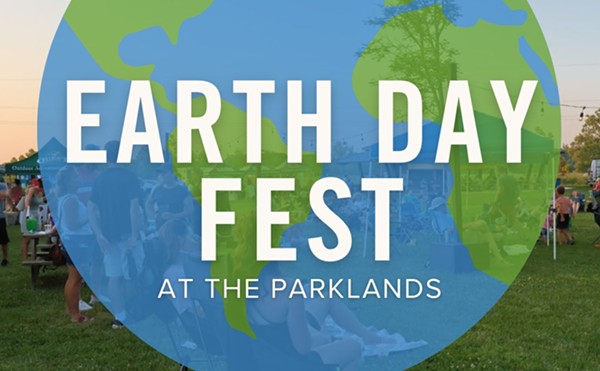I was pretty sure we’d reached the apex of the puerile whining over 8664 late last year, just before the pair behind the proposal finally delivered a professional study and brought to Louisville the highway engineer who devised it — known and respected for his innovation —
to deliver the results.
After all, it was a direct response to the criticism that the proposal to replace a stretch of I-64 at the waterfront with a land-level boulevard was fantasy, pie-in-the-sky, pick your cliché.
Nope.
To paraphrase author Nick Flynn, welcome to Another Bullshit Night in Possibility City.
The Metro Council’s ad hoc committee examining the 8664 proposal — which, taken with the study, is another step toward necessary and legitimate debate on this issue — is now drafting a statement to tell legislators, bridge backers, the general public, and whomever else cares that their purpose is not to derail the Ohio River Bridges Project, the $4.1-billion behemoth that would expand Spaghetti Junction to a 23-lane interchange and construct both a downtown and East End bridge.
Committee chair Tina Ward-Pugh, D-9, has said this out loud before. Many times. In public. To the press. At the meetings. Now she and her colleagues are wasting time and money drafting this looking-glass statement of purpose in the hopes of triumphantly repeating themselves to a crowd of thickheaded troglodytes who can’t summon the energy to listen.
Don’t blame Ward-Pugh. At least she has the intellectual curiosity that’s sorely lacking over this issue in official hallways. The pathetic alternative to such thinking has been on display for months from the entrenched crowd of bridge-backers:
1. “8664 has been studied before”: Untrue. Several times I have requested the supposed 1999 study of an idea similar to 8664. I’ve been given various lines about it, including that it’s “no longer in print.” So I asked a traffic engineer — not an 8664 backer by any means — who was around during the time working for the state, and he said that “study” was a daylong chat about the idea. Enlightening. In fact, a white paper commissioned by the Downtown Development Corporation in 2005 actually revealed that an idea similar to 8664 could meet the same goals as the ORBP, given certain considerations in the planning of such a thing. We don’t hear much about that.
2. “It won’t meet our traffic demands”: Because 8664 has not been run through traffic modeling studies by our regional transportation authority, KIPDA, there is no data supporting this excuse. As the committee recently learned, such a study would take a mayoral initiative, which isn’t likely — even though it could provide a fact with which the anti-8664 crowd could feather its cap.
3. “Studying 8664 will derail the Bridges Project”: A scare tactic worthy of Donald Rumsfeld. Even the mayor’s office doesn’t peddle this one anymore, and yet here we are awaiting a statement from the committee saying that its intention is not to derail the project.
4. “8664 would take project planning back to square one”: Not necessarily true. Because 8664 would occupy considerably less space within the same footprint as the Bridges Project, and because it appropriates the ORBP’s East End bridge design, the approval process could take inside a year, one traffic engineer has said.
I called Tina Ward-Pugh Tuesday and said I was writing a column about how absurd it is that a committee of our city’s legislative body is required to basically apologize for attempting to stoke debate.
“There’s no question that that is part of what is most regretful about this,” she told me. “If we’re going to be the Possibility City, then stop telling us there is no possibility of an alternative to what’s been proposed.”
When it comes to transportation, Possibility City is all about the status quo. But the debate over 8664 is illuminating not because of what it reveals about transportation policy, but for the ugly streaks of character it brings out in some of the people to whom we’ve entrusted — willfully or not — the future of this city. If our progeny is borne of our ability to move goods and services over roads, we might survive. If it’s to attract the young, best and brightest here to think, work and live, we should begin to consider thoughtfulness a virtue.
Contact the writer at
[email protected]





